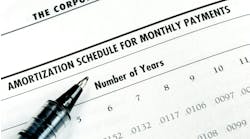It used to be that the role of the corporate treasury was largely unnoticed outside of the finance department, with cash management being considered an important but tactical, rather than strategic, process. That image was considerably upgraded in status throughout the recession and its aftermath, when manufacturers and other large companies grew to appreciate the treasury's ability to not only keep their companies out of the red but to take on additional responsibilities, such as cash flow forecasting, risk management, financial planning and analysis, and investor relations.
See Also: Manufacturing Industry Finance News & Trends
According to a recent treasury benchmarking study conducted by the Association of Finance Professionals (AFP), more than half (55%) of all companies surveyed have expanded their treasury department's role over the past five years. The key measure of success for treasury, cited by 79% of respondents, is the ability to reduce banking expenses.
"The best companies are distinguished by great treasuries," says Jim Kaitz, AFP's president and CEO. "Yet the current business environment means that companies are demanding a high level of efficiency in treasury cost structures and process design."
The role of the treasury could expand even further due to a trend reported by The Wall Street Journal (April 17, 2013) whereby large manufacturers are demanding more time to pay their suppliers. Consumer goods giant Procter & Gamble Co. (IW 500/11), for instance, plans to shift its payment terms from 45 days to 75 days, a move that could free up $2 billion in cash for P&G, according to the WSJ. Suppliers in turn would have to make some choices: Can they afford to wait an additional 30 days to get paid? Should they put a similar squeeze on their own suppliers, many of whom tend to be smaller companies? Should they work with banks to obtain cheap financing (often leveraged by the big companies), getting payment in a much shorter time frame but giving up a portion of their payment to the bank?
Since small and mid-sized companies can find it difficult to obtain financing from traditional sources such as banks, another option would be to work with commercial lending companies. One common alternative is known as factoring, which is "the outright purchase of a business's outstanding accounts receivable by a commercial finance company, or factor," explains Tracy Eden, marketing director for Commercial Finance Group. "Typically, the factor will advance the business between 70% and 90% of the value of the receivable at the time of purchase; the balance, less the factoring fee, is released when the invoice is collected." The fee, he notes, is based on the total face value of the invoice, not the percentage advanced, and typically ranges from 1.5% to 5.5%.
Eden cites the example of a start-up manufacturer of plastic items. "After a slow start, the company saw a big increase in both domestic and overseas orders about two years ago. However, the overseas orders tied up their working capital for long periods of time, and they didn't have enough inventory to fill some domestic orders." An alternative financing arrangement, however, provided the company with sufficient cash to fill orders, and to sustain rapid sales growth throughout this year.




